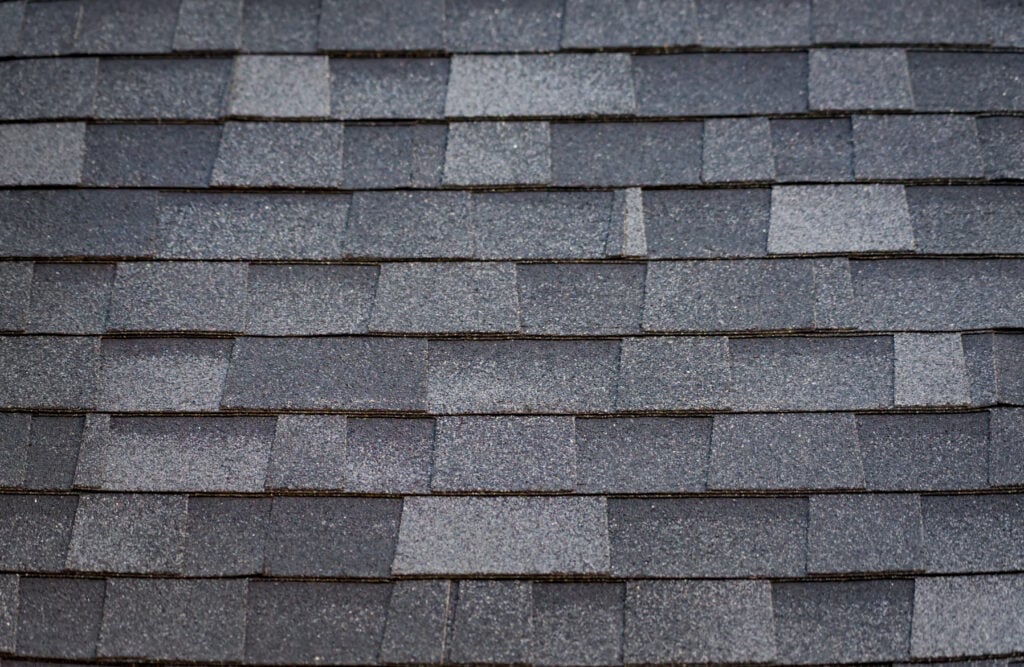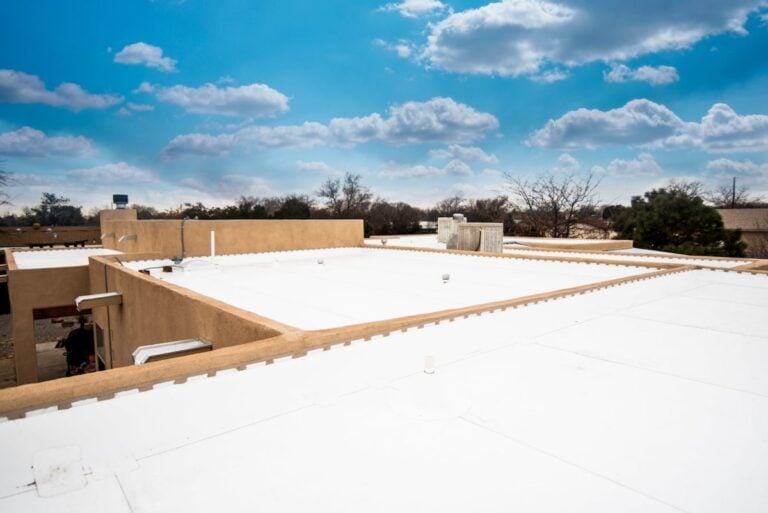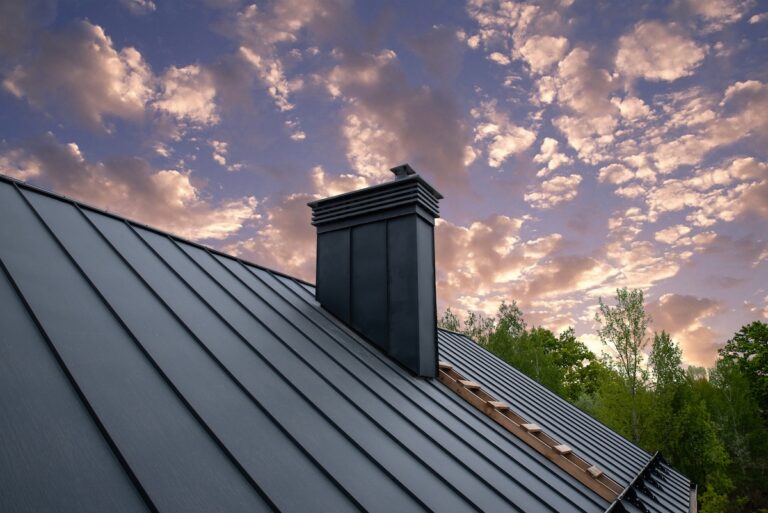How to Install Architectural Shingles on a Roof (8 Easy Steps)
Installing architectural shingles can transform your home’s appearance while providing excellent protection against the elements. These dimensional shingles offer superior durability and aesthetic appeal compared to traditional three-tab shingles, making them a popular choice for homeowners seeking both function and style.
This comprehensive guide will walk you through the complete process of how to install architectural shingles, from preparation to finishing touches. Whether you’re considering a DIY approach or simply want to understand the process before hiring professionals, you’ll learn everything you need to know about proper installation techniques, required materials, and safety considerations.
Here’s what we’ll cover:
- Understanding architectural shingles and their benefits
- Step-by-step installation process
- Common mistakes to avoid during installation
Understanding Architectural Shingles

Architectural shingles, also known as dimensional or laminated shingles, consist of multiple layers of asphalt material bonded together. While many homeowners consider architectural shingles to be among the best roof shingles on the market due to their superior durability and aesthetics, there are other excellent options to consider, such as traditional 3-tab shingles or premium designer shingles. This construction creates a textured, three-dimensional appearance that mimics the look of natural materials like wood shake or slate.
Key Benefits of Architectural Shingles
These premium shingles offer several advantages over standard options. They typically last 25-30 years with professional installation and maintenance. Their multi-layered construction provides enhanced wind resistance, often rated for winds up to 130 mph. The dimensional design also adds significant curb appeal and can increase your home’s value.
Architectural shingles come in various colors and styles, allowing homeowners to complement their home’s architecture. They’re also heavier than three-tab shingles, which contributes to their durability and weather resistance.
Essential Tools and Materials
- Gather tools like a hammer or nail gun, utility knife, chalk line, measuring tape, ladder or scaffolding, pry bar, roofing shovel, and safety gear (harness, non-slip shoes).
- Purchase materials including architectural shingles, underlayment, starter strips, ridge cap shingles, roofing nails, drip edge, ice and water shield, and flashing.
- Measure your roof’s square footage and add 10-15% extra for waste; suppliers can assist with exact quantities.
- Prepare all tools and materials beforehand to ensure a smooth installation process without delays.
8 Steps to Install Architectural Shingles

Follow these detailed steps for proper architectural shingle installation. Take your time with each step to ensure long-lasting results. Before you even begin the installation process, the first and most critical step is to accurately measure your roof to determine the amount of materials you’ll need. Knowing exactly how to measure a roof for shingles will save you time and money, preventing a common mistake of over- or under-ordering materials.
1. Install Drip Edge and Starter Strip
Start by installing the drip edge along the eaves and rake edges of the roof. The drip edge serves as the first line of defense by protecting the roof deck and directing water away from the home’s foundation, helping to prevent long-term damage. Secure the drip edge with roofing nails, spacing them 8-10 inches apart to ensure it stays firmly in place.
Next, install starter strips along the eaves to provide a stable base for the first row of shingles. These strips are critical for proper water shedding and keeping the shingles securely in place. Position the starter strip so it overhangs the drip edge by 1/4 to 3/8 inch. Taking the time to get this step right will set the foundation for a successful roofing project.
2. Establish Your First Course
Snap a chalk line 11 5/8 inches from the bottom edge of the starter strip. This chalk line acts as a guide to ensure your first full row of shingles is aligned perfectly. Proper alignment at this stage is crucial, as any missteps here will affect the entire roof installation.
Begin installing the first course of shingles at the center of the roof and work outward toward the edges. Starting at the center helps maintain straight alignment and reduces the chances of misalignment as you work. Each shingle should overhang the drip edge by 1/4 to 3/8 inch to ensure water is directed off the roof efficiently.
3. Nail the Shingles Properly
Proper nailing is essential for a secure and weather-resistant roof. Use four nails per shingle for standard installations. If you live in a high-wind area, use six nails per shingle for added durability. Place the nails in the designated nail zone, typically located 5/8 to 1 inch from the top of the shingle cutout.
Drive the nails straight and flush with the shingle surface, avoiding overdriving, which can damage the shingle and reduce its effectiveness. Position each nail so it penetrates both the shingle being installed and the overlapping shingle above. This technique creates a strong seal that prevents water infiltration and ensures the shingles stay in place over time.
4. Create a Proper Offset Pattern
Architectural shingles require a staggered offset pattern to prevent water from running straight down between shingles. Offset each course by 6 inches from the row below to ensure optimal performance and a visually appealing finish.
Use the cutout lines or measurement marks on the shingles to maintain consistent offsets throughout the roof. Some manufacturers provide specific instructions for offset patterns, so always refer to the guidelines provided with your shingles to ensure compliance with their recommendations.
5. Continue Up the Roof
Work methodically up the roof, maintaining the correct offset pattern and nail placement as you go. To ensure everything stays aligned, snap chalk lines every few courses as a reference. This helps prevent small errors from accumulating, which could compromise the final appearance and functionality of the roof.
At the rake edges, trim shingles to leave a 1/4 to 3/8-inch overhang for water protection and clean edges. Use a sharp utility knife to make straight, precise cuts, ensuring a professional-looking finish. Regularly check your progress to confirm that everything remains aligned and consistent.
6. Install Around Roof Penetrations
Pay close attention when working around roof penetrations such as vents, chimneys, and skylights. Before shingling around these areas, install the appropriate flashing to create a watertight seal. Flashing helps direct water away from penetrations and prevents leaks.
Cut shingles to fit snugly against the flashing, but avoid cutting them too tightly, as this could cause buckling and reduce their effectiveness. For pipe vents, cut a hole slightly smaller than the pipe diameter and slip the shingle over the pipe. Then, install the vent boot over the shingle, ensuring a proper seal, and overlap with the next course of shingles above.
7. Handle Ridge and Hip Installation
Finish your roof with ridge cap shingles along the ridges and hips for a polished appearance and additional weather protection. Use ridge caps specifically designed for this purpose, or cut regular shingles into three equal pieces.
Start at the end of the ridge opposite the prevailing winds to ensure better resistance to wind uplift. Overlap each ridge cap shingle by 5 inches and secure it with two nails positioned 5 1/2 inches from the end and 1 inch from each edge. Proper installation of ridge caps not only improves the roof’s durability but also enhances its overall look.
8. Conduct Final Inspection and Cleanup
Once the shingles are in place, inspect your work thoroughly to ensure everything is properly installed. Check for correct nail placement, adequate overlaps, and secure attachment of all shingles. Verify that all flashing is securely in place and sealed to prevent leaks.
Finally, clean up the worksite by removing all debris and leftover materials. Dispose of old shingles and other waste responsibly—many areas offer recycling programs for asphalt shingles, making disposal more eco-friendly. Conducting a final cleanup ensures your project is complete and leaves your property looking tidy.
Common Installation Mistakes to Avoid

Several common mistakes can compromise your architectural shingle installation. While a DIY approach may seem more cost-effective upfront, professional installation and proper roof inspections will save you money in the long term by preventing costly errors and catching small issues before they become major problems. Avoid these issues to ensure optimal performance and longevity.
Improper Nail Placement
One of the most common causes of shingle failure is improper nail placement. When nails are placed too high on the shingle, they fail to secure the shingle properly to the roof and do not penetrate the underlying shingle layer. This reduces the roof’s ability to resist strong winds, making it more susceptible to damage during storms. On the other hand, nails placed too low can become visible on the roof’s surface, creating unsightly blemishes and potential entry points for water. Water infiltration through these improperly placed nails can lead to leaks, structural damage, and costly repairs. To avoid these issues, always follow the manufacturer’s guidelines for nail placement and ensure that nails are driven in securely and at the correct depth.
Incorrect Overlap Patterns
Shingle installation requires precise overlap patterns to ensure proper water shedding and structural integrity. Failing to maintain the correct offset patterns during installation can lead to weak points in the roof, where water is more likely to penetrate. Over time, this can result in water damage, mold growth, and compromised roofing materials. For example, if shingles are lined up with insufficient stagger or overlap, they may fail to provide the necessary coverage, leaving the roof vulnerable in heavy rain or snow. To prevent these issues, it’s crucial to follow the manufacturer’s specifications for overlap requirements, ensuring that each shingle layer is aligned and positioned correctly. Proper overlap patterns not only create a watertight seal but also increase the roof’s lifespan and performance.
Inadequate Ventilation
Attic ventilation plays a critical role in the health and longevity of your roof. Without adequate intake and exhaust ventilation, hot air and moisture can become trapped in the attic space, leading to a range of problems. Excess heat buildup can cause roofing materials, including shingles, to deteriorate prematurely, while trapped moisture can lead to rot, mold, and mildew. Poor ventilation also reduces the energy efficiency of your home, making it harder to regulate indoor temperatures and increasing energy costs. Before installing new shingles, it’s essential to evaluate the attic’s ventilation system and ensure there is sufficient airflow. This includes checking for balanced intake (such as soffit vents) and exhaust (such as ridge or gable vents). A well-ventilated attic not only prolongs the life of your shingles but also helps maintain a comfortable and energy-efficient home.
Trust Cabezon Roofing for Your Architectural Shingle Installation
Installing architectural shingles is a complex process that requires precision, experience, and attention to detail to ensure long-lasting performance and protection. At Cabezon Roofing, we combine years of expertise, GAF certification, and a deep understanding of New Mexico’s unique climate to deliver roofing solutions that stand the test of time. From selecting the best materials to ensuring flawless installation, our team is committed to quality craftsmanship and customer satisfaction every step of the way.
Don’t leave your roofing project to chance—trust the experts at Cabezon Roofing to protect your home and enhance its curb appeal. Contact us today for a free inspection and estimate, and let us show you why we’re the team you can rely on for all your roofing needs!



